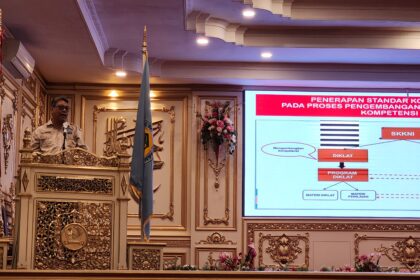[ad_1]
MANILA – The Philippines and United States have kicked off their annual Balikatan (shoulder-to-shoulder) military exercises, a  joint show of force in the face of China’s rising maritime assertiveness over Manila-claimed waters in the South China Sea.
Even in this year’s scaled down version due to Covid-19 health protocols, the Balikatan will involve close to 1,000 troops from both sides, underscoring the significance both Manila and Washington attach to their mutual defense treaty.
Past exercises have seen as many as 7,600 troops participate. The Balikatan was cancelled last year due to Covid-19 concerns.
The resumed drills coincide with unprecedented US and Chinese naval deployments across Asian waters, including in the South China Sea, as the two sides’ superpower rivalry enters a new and evermore dangerous phase.
Over the past month, an armada of Chinese maritime militia forces have swarmed Philippine-claimed islands within the contested Spratly island chain.
In response, the Philippines has deployed fighter jets and maritime patrol vessels to the area, as more than 200 Chinese militia vessels surrounded the Whitsun Reef and other land features within the Philippines’ exclusive economic zone (EEZ).
Philippine Secretary of Foreign Affairs Teodoro Locsin recently warned that his country will be “firing off†diplomatic protests “every day until the last one’s gone like it should be by now if it is really fishing.â€
China has repeatedly maintained that the boats were stranded fishing vessels operating within the country’s “traditional fishing groundsâ€, a claim that Philippine Defense Secretary Delfin Lorenzana recently dismissed as “blatant falsehoods.â€
As of early this week, there were at least nine Chinese vessels still lurking around the Philippines’ Kalayaan Group of Islands (KIG) in the Spratlys. “Time to go,†Locsin recently wrote on Twitter. “While it may well be traditional [Chinese] fishing grounds, tradition yields to law,†he added.
The Philippines on Tuesday said it had summoned Beijing’s top envoy in Manila to press for the Chinese ships to immediately leave the Whitsun Reef, with officials describing the escalating row as a “source of regional tension.â€
Despite Philippine President Rodrigo Duterte’s best efforts to maintain warm ties with Beijing, strategic patience is reportedly running thin among his generals and top cabinet members.
In recent years, the Philippines has accused China of inflicting massive ecological damage of at least $100 million annually across its waters, as Beijing stepped up its reclamation and fisheries activities across the South China Sea.
At the same time, President Rodrigo Duterte has dropped a gauntlet on the US last year by unilaterally cancelling the Visiting Forces Agreement (VFA), which provides the framework for US troop and equipment rotation through the country.
He did so in response to US criticism of his government’s rights record. The VFA has since been twice extended, though Duterte has called on the US to pay more for privileges accorded under the agreement.
In the phone call on Sunday between Lorenzana and US Defense Secretary Lloyd Austin, the latter reiterated the importance of VFA between the two countries, according to a statement issued by the Philippine defense department. Lorenzana committed to discussing the matter with President Duterte, the statement said.
The Biden administration is sending a strong signal of reassurance to Manila. Also on Sunday, a US aircraft carrier strike group led by the USS Theodore Roosevelt entered the South China Sea from the Strait of Malacca.
The USS Mustin guided-missile destroyer is also sailing in the East China Sea, according to the Beijing-based South China Sea Strategic Situation Probing Initiative.
At the same time, the USS John S. McCain guided-missile destroyer conducted a “routine†transit through the Taiwan Strait.Â
China’s People’s Liberation Army Navy (PLAN) responded in kind by deploying its aircraft carrier Liaoning through the Miyako Strait off southwestern Japan for “scheduled exercises†in the Western Pacific.Â
Crucially, the Chinese drills were near Taiwan to “test the effectiveness of troop training, and to improve the capacity to safeguard the country’s sovereignty, safety and development interests.â€Â
In a show of force, the Chinese aircraft carrier was accompanied by the PLAN’s state-of-the-art Renhai class Type 055 destroyer, a massive warship with a displacement of more than 12,000 tons, which makes it the world’s second most powerful destroyer.
The sea movements are making political waves in Manila. Philippine Senator Risa Hontiveros recently criticized China as “the region’s bully†and an opportunist power “executing a series of coordinated incursions†into Philippine waters amid a raging pandemic.
“It only shows how China will do what she wants for her own selfish interest, even if it means threatening peace and stability in the region,†Hontiveros said in a statement earlier this week.
China’s The Global Times, a state-backed nationalistic newspaper, warned the Philippines “not to act rashly other than making some noise…Otherwise, China will definitely give a strong response.â€
The Biden administration has warned that any “armed attack†on Philippine assets in the area will “trigger our obligations under the US-Philippines Mutual Defense Treaty.â€
“An armed attack against the Philippines’ armed forces, public vessels or aircraft in the Pacific, including in the South China Sea, will trigger our obligations under the US-Philippines Mutual Defense Treaty,†said US State Department spokesman Ned Price on Wednesday, underscoring Washington’s stake in the ongoing maritime showdown.
“We will always stand by our allies and stand up for the rules-based international order,†he added.
The US is backing rhetoric with action. Shortly after the deployment of the carrier USSÂ Theodore Roosevelt to the region last week, the US has also announced that the Virginia-class attack submarine USSÂ Illinois will soon follow suit.
The 36th Balikatan Exercises will run for two weeks from April 12-23 and cover a full range of exercises aimed at enhancing the two sides’ interoperability. Those will include maritime security training, close air support training, and humanitarian and civic assistance activities across the northern island of Luzon.
[ad_2]
Source link










